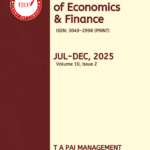
Source: www.financialexpress.com
By S.Seemanthini
Recapitalization is the infusion of fresh capital in the banks by the government. As the major owner of PSUs, on October 24, 2017, the government announced Rs2.11 lakh crore to be infused in the banks. This was done for two purposes, i.e. to help them recover from the NPAs that has been saddling the banks for a long time and also to support the banks in meeting their capital requirements. The recapitalization was meant to be done in a phased manner by the government.
As a part of the recapitalization plan, Rs1.53 lakh crore was to be infused by the government and the rest was to be raised from the market. However, the last phase of capital infusion of Rs65000 crore is dependent upon the performance of the banks. IBA had invited bids in May 2018 and the lowest cost for the project was proposed by BCG. The IBA (Indian Banks Association) in association with BCG (Boston Consultancy Group) has been tasked to do a qualitative and quantitative assessment of the banks based on certain defined themes. The themes are basically a set of reforms agenda called EASE (Enhanced Access and Services Excellence). All PSBs have secured the approvals from their respective boards to implement the EASE plan.
In this, banks have a 50-point action plan that includes customer responsiveness, credit offtake, UdyamiMitra for MSMEs, deepening financial inclusion and digitisation. BCG has to validate the functioning of the banks measuring the reforms plan, data collection and do an analysis of the outcomes. Depending on the outcomes BCG is supposed to submit the compliance report by end of 2018, based on which the centre will take a call on the quantum of funds to be infused in the banks. Under the reforms agenda, PSBs are required to maintain a separate vertical for stressed assets management and perform their due diligence for sanctioning of the loans. Apart from this PSBs have to tie up with agencies for specialised monitoring of loans above Rs2.5 billion. Few more reforms suggested are
- Reduce the size of the consortium with a minimum 10% exposure for each participating bank
- Corporate exposure of any bank should not be more than 40%
- Fast paced loan processing for MSMEs
- Improve digitisation (smart banking) by making branch visits redundant
- Strict surveillance of the loan defaulters
- Strict segregation of post and pre-sanction of roles and responsibilities
- Appoint a whole-time director to monitor the reforms every year
All the 21 PSBs are supposed to implement the reforms as a part of EASE agenda. Since NPAs were mainly attributed to “aggressive lending” and hence, reforms are the banks’ strategy to fast-track the recovery of non-performing assets. As the RBI has mandated the banks to comply with BASEL III norms by 31st March, 2019, that includes additional capital conversion buffer, the recapitalization has sought to be a right move by the government. Indian banks’ ability to maintain capital more than the stipulated Basel norms is the reason why Indian banks were not majorly affected by the 2008 financial crisis. The decision to maintain a cushion capital was based on shrewd and better understanding of banking and its problems by RBI. In order to help the emerging economy of India and banks being the major provider of credit, the EASE reforms plan can be considered a great move by the government before the general elections in 2019.

















Leave a comment